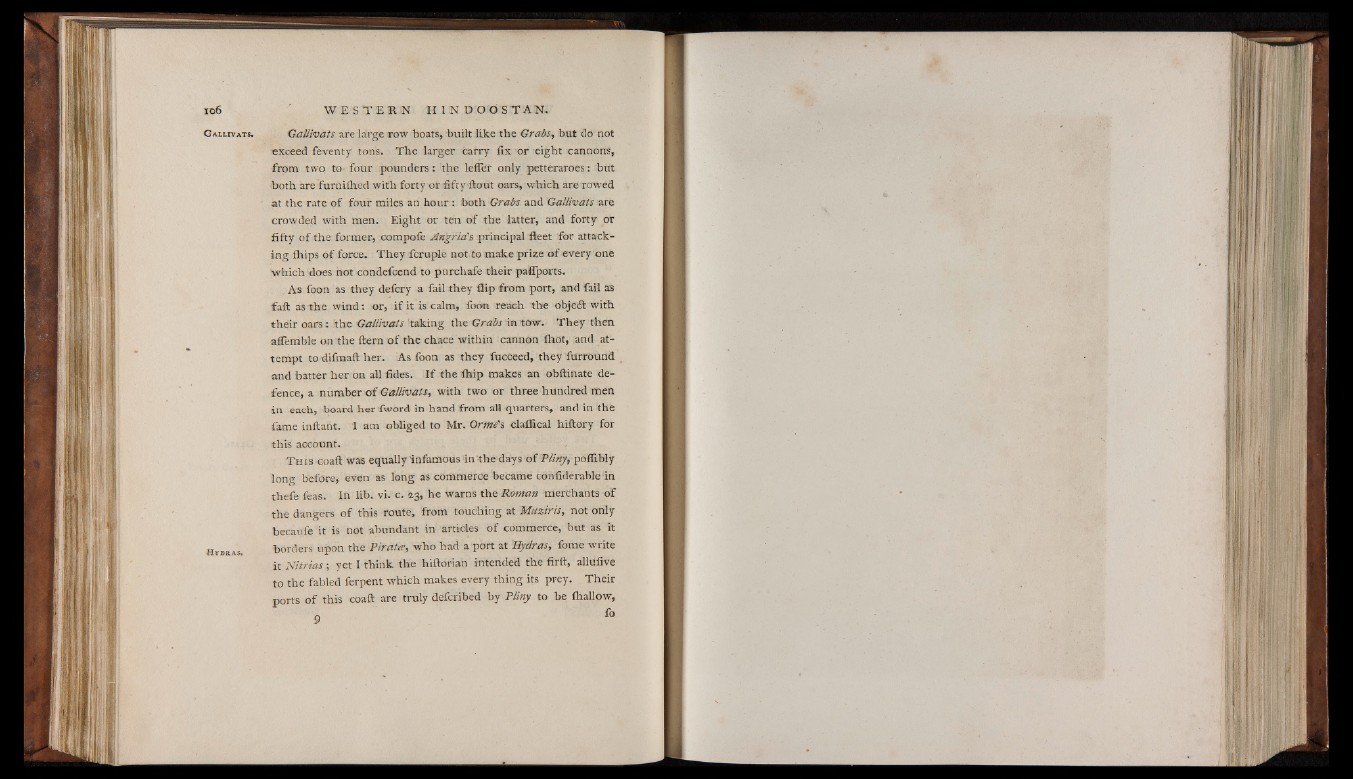
G a l l i y a t s .
-H-YBRASv
Gallivats are large row boats, built like the Grabs, but do not
exceed feventy tons. The larger carry fix or eight cannons,
from two to four pounders : the leffer only petteraroes: but
both are furniihed with forty or fifty flout oars, which are rowed
at the rate of four miles an hour : both Grabs and Gallivats are
crowded with men. Eight or ten of the latter, and forty or
fifty of the former, compofe Angria's, principal fleet for attacking
fhips of force. They fcruple not to make prize of every one
Which does hot condefcend to purchafe their pafiports.
. As foon as they defcry a fail they flip from port, and fail as
fall as the wind: or, i f it is calm, foon reach the object with
their oars: the Gallivats 'taking the Grabs in tow. They then
afiemble on the ftern of the chace within cannon ihot, and attempt
to difmaft her. As foon as they fucCeed, they furround
and batter her on all fides. I f the fhip makes an obftinate defence,
a number o f Gallivats, with two or three hundred men
in each, board her fword in hand from all quarters, and in the
fame inftant. I am obliged to Mr. Orme's claffical hiftory for
this account.
T h i s coaft was eqUally infamous in the days o f P/:«y,poffibly
long before, even as long as commerce became eonfiderable ‘in
thefe feas. In lib. vi. c. 13, he warns the Roman merchants of
the dangers of this route, from touching at Muziris, not only
becaufe it is not abundant in articles o f commerce, but as it
borders upon the Pirata, who had a port at Hydras, fome write
it Nitrias ; yet I think the hiftorian intended the firft, allufive
to the fabled ferpent which makes every thing its prey. Their
ports o f this coaft are truly defcribed by Pliny to be fhallow,
9 fo